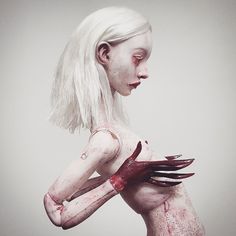The Art Of Immortality
Egyptian art stayed in a constant style for around 3,000 years. Humans were drawn in a very rigid and repetitive style-depicted by a frontal view of the body and a side view of the head. This is displayed in the image below. The bodies of all the figures are facing forward, but their heads are pivoted and facing the side.
The main focus of Egyptian society's art was life after death and the gods. It was an Egyptian belief that after someone died, their spirit ascended to the afterlife where they would live on with the gods. Because of this, they designed most of their art to last forever. Statues were made out of firm materials like diorite and granite so it would take longer for them to weather.
Mummification art was also extremely important in ancient Egyptian times. Embalming helped preserve the body for the afterlife. The deceased person's brains would be removed through their nose, and many other organs would also be extracted and put in jars. The body would be soaked in brine and dried out before being put in the sarcophagus. Tombs were filled with art, food, furniture, and any other things deemed necessary for the afterlife.
The pyramids are another example of Egyptian art. The Great Pyramid of Giza is the largest stone structure in the world. It's constructed out of 2,300,000 limestone bricks, each individual one weighing about 2 1/2 tons. Over 4,000 workers helped to build it. Estimated, it took about 23 years to build.







Great job. Keep it going :)
ReplyDelete